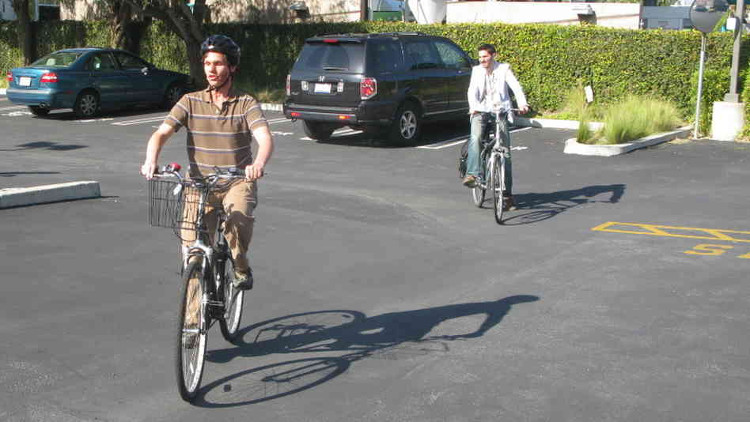Can humans look at sounds like bats?
'Seeing' the world through sound is not a natural skill of humans, however, through practice, we can also locate the space with bat-like sounds.
A new study recently presented the first detailed description of human echolocation . They describe the sound characteristics and spatial scope of the clicking sounds coming from the mouth. The researchers used these results to develop synthesized sounds to learn more about this extraordinary special skill.
Lore Thaler - one of Durham University researchers, told ScienceAlert: "Understanding the mechanism of sound helps us understand the information that the human brain uses to position the path. echoes, thereby helping us understand the cognitive mechanism ".
For bats, dolphins and some whales, echolocation is an innate ability used to navigate and find food in the dark. When animals make a sound, they listen to echoes echoing from objects in the environment, from which they can feel the world around them.
'Seeing' the world through sound is not a natural skill of humans, but research shows that through practice, blind people can develop senses like bats.
The most famous 'bat in real life' is Daniel Kish , who lost his sight at age 1. However, Kish can climb a mountain, ride a bike and live alone in the wild just by using the skill of creating clicks to ' paint' his mind around, with a degree Amazingly accurate.

Despite being blind, Daniel Kish could still "see" the way.(Photo: Internet).
However, not only people with visual impairments can develop this ability. In February this year, the press reported on a study that showed that people with normal vision can still learn to locate space in echoes .
Although we have known for decades about this particular ability of humans, we still do not understand the sound patterns of the noises or what is happening in the brain when these sounds are create.
The researcher Thaler and her team have developed detailed descriptions of the clattering sound emitted by the human mouth to answer these questions. The working group with the help of three blind people are echolocation experts who often use this technology in their daily lives.
Each participant is in an empty room and is asked to make sounds like they normally do. The researchers recorded these noises and conducted sound characteristics analysis, such as the distribution in space and the frequency range generated.
When the team looked at the duration of the clicks, they found that they were only three milliseconds long - much faster than the results of previous studies. In these three milliseconds, the sound has a big and sudden start, then descends and falls into space.

Through practice, humans can locate in echoes like bats.(Photo: Shutterstock).
Surprisingly, this kind of clattering sound is much higher orientation than speech and can easily be simulated by anyone.
"One way to visualize this kind of sound is to see it as light rays emitted from a flashlight. The pattern of the sound beam is similar to 'the shape of the sound flashlight'. "Visually impaired people use ," said Thaler.
But to learn more about how echolocation works, researchers need to experiment with a wider range. However, experts on this skill are not many and it is difficult to invite them to participate in the experiment.
To solve this problem, the team used detailed results to develop a mathematical model that synthesizes clattering sounds emanating from the human mouth. In this way, researchers can investigate the echo of the sound without the presence of those proficient in this skill.
"Using virtual simulation models will allow us to explore the sounds associated with human sound positioning. And when we know the relevant sound mechanisms, we can be inspired to creating useful technologies, ' added Thaler.
- Male bats are 'sexy singers' most animal world
- The truth about creatures saves billions of dollars
- Video: Use helicopters, guns to
- Bats do not land similarly
- How do bats spread disease globally?
- Discover new bats on dogs in Panama and Ecuador
- Terrible hot sun causes bats to fall like a fig in Australia
- Discover panda bat in South Sudan
- Discover 4 strange bat species
- New discoveries about bats: Male bats use food to propose
- Why do bat hang upside down when sleeping?
- Two-headed bat carcasses in Brazil shocked the experts
 'Fine laughs' - Scary and painful torture in ancient times
'Fine laughs' - Scary and painful torture in ancient times The sequence of numbers 142857 of the Egyptian pyramids is known as the strangest number in the world - Why?
The sequence of numbers 142857 of the Egyptian pyramids is known as the strangest number in the world - Why? Miracle behind the world's largest stone Buddha statue
Miracle behind the world's largest stone Buddha statue What is alum?
What is alum?